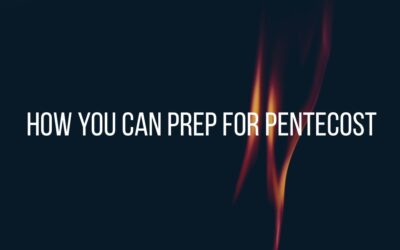Spoiler Alert:This review contains some minor spoilers about the plot of Barbie.
When I was a girl, at a certain age I had only one wish each time I opened a gift, and that wish was, “Please be a Barbie doll.” I was obsessed then, and although I never collected as many Barbies as I desired (probably a wise decision on my parents’ part), I collected enough that I still had a few unopened ones that I passed to my daughter last year. It was an eclectic group: Graduate Barbie (Class of 2000), Chinese Empress Barbie, Colonial Barbie, and the crème de la crème: Holiday Barbie.
With such a history, I absolutely fall within the target demographic for the movie Barbie. I’ve always had a soft spot for Barbie, and the chance to see “Barbie the Grown-up,” as my daughter’s friend called the movie, was too tempting to pass up. I was clearly not alone in my curiosity, since at the time I’m writing, Barbie has blown away expectations and surpassed $1 billion in ticket sales worldwide.
This film has content problems, for sure. (See here for a gracious Christian review of the pros and cons from a content standpoint.) For me, it also held some delightful surprises and moments that left me teary-eyed with recognition of the characters’ struggles. Read on if you don’t mind a few light spoilers on this topic, and suggestions how a pastor might connect this global cultural moment with what it means to be discovering your true purpose and enduring unwelcome change. And if you really can’t do Barbie, but you’d like to watch a movie that explores the positive themes, I recommend another recent film that features a doll on a journey toward identity (and stays within PG bounds of content), Guillermo del Toro’s Pinocchio, or any of the Toy Story films.
Back to Barbie: There is a LOT going on in the movie, but the core storyline centers on Barbie’s growing knowledge that her life in Barbieland is changing, for reasons she doesn’t understand, and not for the better. How will she respond? We meet her on her last perfect day, seeing her float happily through her Dream House to the Beach, just before things start to unravel. (For the record, the visuals in Barbieland are dazzling and do live up to the movie’s hype.)
That night, she brings her disco party to a screeching halt by wondering aloud to the other Barbies and Kens, “Do you guys ever think about dying?” Her perfect life continues to come apart the next day (“FLAT FEET!!”) and she has to seek help from a doll who lives apart from the others, one called Weird Barbie, to learn how she might put things back together.
This is where I started to recognize myself, and my own responses, when life doesn’t go as planned. Weird Barbie tells our heroine, who calls herself “Stereotypical Barbie,” that she must choose her path forward, and then presents her a sort of “blue pill, red pill” scenario, a goofy echo of that scene from The Matrix. Barbie can keep her life the same (the blue pill – represented by a pretty pink high heel) or learn the truth (the red pill – represented by a Birkenstock, a shoe truly made for flat feet!).
Barbie, explaining she’s not the adventurous type, points to the high heel, “That one!” I laughed, knowing that I often wish for the same–let’s skip the struggle and go back to what’s safe and easy! Alas, Weird Barbie breaks the news that Barbie must take the red pill, so it’s off to the Real World to find the fix, and the hard work begins for Barbie.
She continues to look for simple answers and shortcuts as she goes, until she reaches the point where it’s clear that the quick and easy solutions have failed, and she’s faced with the actual truth: her life might never go back to the way it was before. The cheery optimism is replaced immediately by despair. Another pang of self-recognition: If at first you don’t succeed…all hope is lost. It’s a perfectionist’s curse, and while her breakdown is played for laughs, I get the sense that the filmmakers have walked this road too – from high hopes and certainty that you can control the outcome to losing your grip on the situation and sliding rapidly into depression and grief.

Margot Robbie, star of Barbie. Photo by Gage Skidmore.
Along the way, we’ve already had hints that Barbie’s journey might not be back to perfect, but toward something more real. Several involve brief but deep moments of recognition, connection and emotion (Barbie actually cries quite a lot in this film!) She encounters an older woman on a park bench who sits quietly beside Barbie as her tears come for the first time, and as Barbie starts to realize that beauty lies within true experiences, the good and the painful.
Barbie meets a mom and daughter navigating the teen years with difficulty and finds them a valuable help through the Real World and back to Barbieland. And, in a short but meaningful visit with a character we come to know as Barbie’s creator, Ruth Handler, Barbie begins to experience the complicated virtues that lie beyond perfection and shame: peace, freedom, self-acceptance and grace.
Toward the tail end of the film, as Barbie recovers from a series of challenges, and all of Barbieland stretches toward a new normal, Barbie receives another chance to visit with her creator. The two have a conversation around identity and belonging. She learns she’s always had more choices than she realized. For a perfectionist, this insight can be mind-blowing; obsessed, like Barbie, with living life in the ideal, we perfectionists often struggle mightily to be ok with a Plan B. Barbie ends up not just ok with her Plan B, but fulfilled and joyful.
This final change for Barbie unfolds to a song I can’t really listen to without crying, “What Was I Made For?” sung by Billie Eilish, capturing that place within crisis where grief turns into a tiny hope and, maybe, maybe, the courage to keep going:
Think I forgot how to be happy
Something I’m not, but something I can be
Something I wait for
Something I’m made for
Something I’m made for
I don’t know exactly what motivated the Barbie filmmakers to include this ending, or a God-figure in their story, but as a believer, I was touched by Barbie’s existential search and the way she encounters her creator at the climax of the story. From reading secular reviews and comments, I noticed many people were puzzled by it, but for someone with a faith background who values mentoring, it made sense to me that someone searching for identity might need a guide, maybe an Ultimate Guide, to find her way forward. That resonated with me.
For myself, I’ve had to learn to experience the gaze of God as loving, not condemning, inviting me to come near and be healed and to keep growing. The creator figure in Barbie has that sort of wise and kind presence. I also believe, as it suggests in this film, God delights in us when we make it through a terrible season full of uninvited pain. In fact, God meets us there. In a small way, and even with a lot of silliness attached, this movie reflected those moments of holy encounter back to me. I felt grateful.

Colleen Strachan is a Contributor with The Pastors Workshop. She is a Spiritual Formation professional who works in the non-profit space. She enjoys Anglican worship and has served churches in New Jersey, Colorado, Washington and Pennsylvania. She holds a BA from Wheaton College, an MDiv from Princeton Theological Seminary and is a current student in the Renovare Institute for Christian Spiritual Formation.
Colleen is married to TPW founder Stu Strachan, and they are on the shared adventure of raising two children in the Real World. She has made peace with letting go of all of her Barbie dolls, although she does own a pair of pink shoes.
Don’t Miss
The Latest From Our Blog
New Site Launches Tomorrow!
Watch this Space! Tomorrow (May 29) is the official launch of the new The Pastor's Workshop site! Return to this blog tomorrow morning for a post highlighting the new features and explaining how subscribers can get on and start using the site! Here are some new...
How You Can Prep for Pentecost
This was originally posted on May 12, 2016 on https://huffpost.com Pentecost Came Like Wildfire I'm lying on an ice pack early this morning, doing my back exercises and listening to Pray as You Go, a tool for meditation, with monastery bells, music, and a Bible...
Sacred Spaces: the Church Forests of Ethiopia
Let's Go to Ethiopia! Here’s a fun exercise with a spiritual payoff. Go to Google Maps and view aerial images of the South Gondar zone of Ethiopia. Use this button:When the page loads, you'll see a light brown countryside, mostly farmland. There are thin lines of dark...




